Get to know some of the Helmholtz scientists who would like to welcome a visiting researcher to their group for a short-term research stay. Find out what projects they are currently working on, what your contribution can look like and what you can learn from their specific research approaches.
Helmholtz-wide cooperations
If you are looking for a suitable host supervisor, please note: You can also contact other scientists (usually PIs or Head of Divisions) at the 18 Helmholtz centers for this purpose and arrange with them to participate in the Helmholtz Visiting Researcher Grant or the HIDA Trainee Network. The list below is not exhaustive.
For an overview of the Helmholtz centers and specific research areas, please click here:
Helmholtz Hosts
Get to know your potential hosts at the Helmholtz Centers and learn more about their respective data science research by clicking on the cards.
Please note: You have to contact your potential host supervisor by email in order to propose and discuss a possible research project before submitting your application.
If you do have questions, please email: hida@helmholtz.de
Would you like to become a Helmholtz host yourself and are looking for support for your research project? Then please contact us at the above e-mail address as well.
Helmholtz Center for Environmental Research - UFZ
The Helmholtz Centre for Environmental Research (UFZ) is one of the world’s leading institutions studying the impact of human activity on the environment. Its research focuses on challenges in terrestrial ecosystems, such as soil, forest, and water pollution, biodiversity loss, and ecosystem disruption — driven by climate change, population growth, and the increasing demand for food and energy.
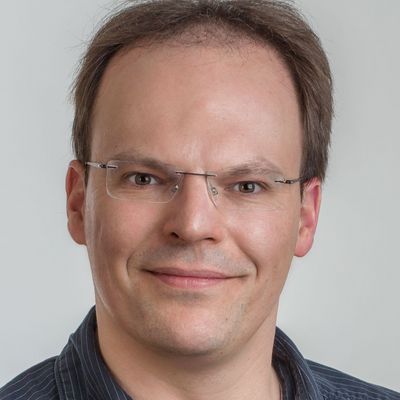
Patrick Fink
Contacts

Short summary of your group's research: We investigate the ecology of aquatic organisms in response to environmental change and heterogeneity. In particular, we are interested in adaptations of these organisms on the levels of behaviour, physiology, phenotypic plasticity and evolution. We use a broad spectrum of methods ranging from molecular biology, analytical chemistry, stable isotope analysis, physiology and behaviour. In particular, we use the UFZ’s MOBile aquatic mesoCOSm facility (MOBICOS) to perform controlled, multifactorial experiments on the effects of natural and anthropogenic stressors on stream ecosystems. Thereby, we aim to relate the organisms and their adaptive response to properties of the whole ecosystem such as biodiversity, food web structure, trophic transfer or matter and energy to gain a better understanding of ecosystems' structure and functions.
What infrastructure, programs and tools are used in your group? Mesocosm infrastructure MOBICOS for the study of biodiversity, ecosystem functioning and multiple stressors on streams, rivers and lakes; water quality monitoring stations along land use gradients from pristine to heavily impacted sites; combined with laboratory studies on eco-physiology of aquatic organisms to study their adaptations to environmental change; and analytical chemistry to quantify compounds critical for the regulation of ecosystem functioning.
What could a participant of the HIDA Trainee Network learn in your group? How could he or she support you in your group? We work across multiple scales from applied field ecology, mesocosm experiments in semi-natural settings to highly controlled assays of physiological functions and analytical chemistry in the laboratory. Hence, researchers from different backgrounds can find both familiar settings to which they contribute previous experience, but also challenging new opportunities to broaden their approaches. By combining large scale field experiments with small scale ecophysiological assays and studies of molecular regulatory mechanisms, we aim for a holistic approach to study the mechanisms regulating the diversity of organisms, their physiological functions and how these contribute to the functioning of entire ecosystems. Researchers from all fields of biological, chemical and environmental sciences are welcome to contribute to these goals by contributing their diverse methods, approaches and creativity.

Rohini Kumar
Computational Hydrosystems
Contacts

Three-sentence summary of your group's research: Our group works on improving our understanding of hydroclimatic drivers, anthropogenic pressures, and responses to the fate of water and nutrient cycles in the terrestrial system. We use data analytics and mechanistic modeling approaches to analyze and disentangle the varying role of climate, landscapes, and socioeconomic drivers shaping the hydrological response of the system. Our analysis encompasses a range of temporal scales and spatial domains varying from hourly to annual timescale in small headwater catchments to big continental-scale river basins, and our investigations cover challenging freshwater resource problems with an emphasis on unraveling hydroclimatic extremes (e.g., floods, droughts, heatwaves) under historical, contemporary and future climate conditions.
What infrastructure, programs and tools are used in your group? We use both the local PC and High-Performance Computing (HPC) systems tailored to specific needs. We use our in-house developed multi-scale hydrologic modeling system (www.ufz.de/mhm) and water quality models for large-scale simulations.
What could a guest researcher learn in your group? How could he or she support you in your group? Given the wide diversity of our work, we offer learning processes on the building blocks of mechanistic models, working with large-sample and large-scale databases. We welcome and invite researchers from different disciplines (e.g. computational hydrology, water quality, agronomy, and soil sciences) to work with us on synthesizing and documenting processes, patterns, and trends of water and nutrient flow under historical and future climate and socioeconomic conditions.

Oliver Lechtenfeld
Environmental Analytical Chemistry
Contacts

Short Summary of your Groups research: The research group BioGeoOmics integrates state-of-the art instrumental and methodological approaches to study dynamic interactions of molecules in the environment. These molecular interactions include natural processes (e.g. metabolism, organic matter diagenesis) as well as anthropogenic interferences (interaction of biological systems with chemicals). In addition to analytical method development we also develop chemoinformatics and machine learning aided data evaluation techniques.
What infrastructure, programs and tools are used in your group?At the core of the the analytical toolkit of the BioGeoOmics-group, we use ultra-high resolution mass spectrometry (FT-ICR MS) and mass spectrometric imaging (MSI). We devolp methods for non-target metabolomics and biogeochemistry using stable isotopes to study chemical and biological transformations of organic molecules, their spatial localization in tissues, and to identify metabolites and unknown chemicals and transformation products in complex mixtures.
Our group develops (automated and interactive) data processing pipelines using R, the ETL platform KNIME, and PostgreSQL DBMS. We apply multivariate statistical tools and machine learning models to extract knowledge from the zentillion data points generated from ultra-high resolution mass spectrometry and large evvironmental data sets.
What could a participant of the HIDA Trainee Network learn in your group? How could he or she support you in your group? Since our group has a focus on non-targted mass spectrometry, our guest researchers will be able to learn how to utilize and interpret non-targeted data, how to use statistical tools to evaluate the data quality, and how to derive confidence limits inorder to make sound statements about the data. Besides instrumental training on state-of-the art FT-ICR MS systems, we can provide helpful insights about data management and quality control.
Future guest researchers are welcome to provide input on fast and efficient visualization strategies for large amount of data points, on (technical legal) aspects) of software publication, and on continuous integration/deployment.
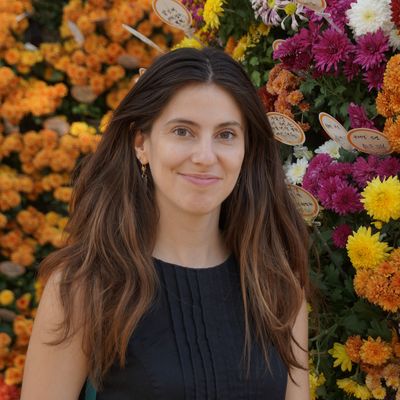
Mariana Madruga de Brito
Environmental Risks & Vulnerability
Contacts

Short summary of your group's research: The research stay will be conducted at the working group Environmental Risks and Extreme events led by Prof. Christian Kuhlicke (https://www.ufz.de/index.php?en = 40374). Dr. Mariana Madruga de Brito will supervise the research. The group has expertise in computational social sciences and digital humanities. We use text as data for natural hazards adaptation, resilience and vulnerability research. We are particularly interested in understanding how these processes affect society and who are prominent stakeholders. Topics of interest include natural language processing (NLP), topic modelling, and unsupervised and supervised learning algorithms. Our text corpora include newspaper articles, tweets, and large sets of peer-reviewed articles.
What infrastructure, programs and tools are used in your group? The participant will have access to high-performance computing infrastructure at the UFZ. As programming languages, we mainly use R and Python.
What could a participant of the HIDA Trainee Network learn in your group? How could he or she support you in your group? As an interdisciplinary research group, we offer many possibilities for a participant of the HIDA Trainee Network and many different applied projects to support. Weekly meetings will be conducted to help monitor progress. The participant can either apply their NLP knowledge to our existing data or shape a new project together with a focus on natural hazards and climate change adaptation research. The final goal is to have a prominent joint publication.
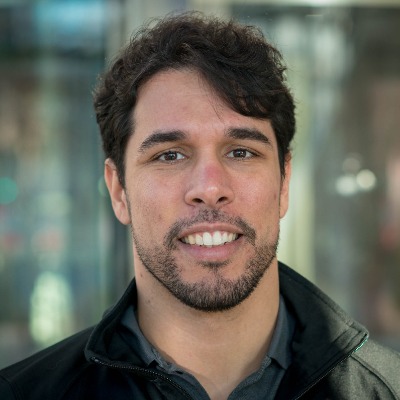
Ulisses Nunes da Rocha
Microbial Data Science
Contacts

Short summary of your group's research: Our group strives to assess environmental health of terrestrials and man made environments by predicting how resilient/stable microbial communities are to disturbances. A special emphasis is put on the development of concepts and theories to scale microbial interactions to the real diversity found in nature. The key research topics of the Microbial Data Science group are based on genetic potential of microbial communities, multi-omics integration and predictive biology. Currently these topics cover:
- Use of (in silico) mock microbial communities to test microbial ecology theories;
- From microbial 'Big Data' to novel ecological concepts and theories;
- Predictive analytics in microbiology, microbial ecology and environmental microbiology.
What infrastructure, programs and tools are used in your group? We use the High-Performance Computing (HPC) Cluster EVE as our main computational resource. We develop and use tools to analyze, resolve and interpret multi-omics data, specially metagenomes. Eg.: tools for the recovery of multi-domain genomes (prokaryotes, viruses and eukaryotes) from metagenomic data. As programming languages, we mostly use Python, R, Bash and Perl to handle and process microbial big data.
What could a participant of the HIDA Trainee Network learn in your group? How could he or she support you in your group? A participant from the HIDA Trainee Network will learn how to download, process and interpret metagenomic data using both publicly available datasets as well as in-house generated data. Further, the participant will work with hands on experimental design and predictive analytics using omics data. We welcome participants from a broad range of fields (e.g. microbiology, ecology, computer/data science) that are eager to learn and/or expand their knowledge in computational biology/data science.
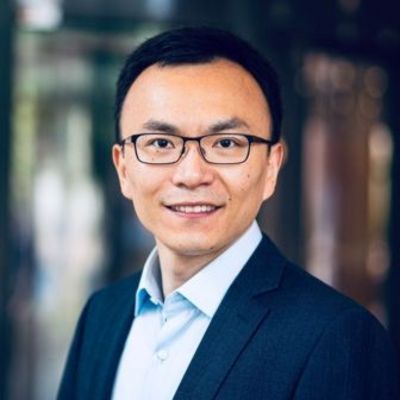
Jian Peng
Hydrology and Remote Sensing
Contacts

Short summary of your group's research: The Department of Remote Sensing conducts innovative research to advance the understanding of the Earth system via various remote-sensing techniques. It has extensive research experience in quantifying land surface dynamics from multi-source Earth observations across scales. Another focus lies on the investigation of land-atmosphere interaction and climate extremes using novel remote sensing products.
What infrastructure, programs and tools are used in your group? Our team has established data lake to facilitate access to and analyse of datasets from satellite, airborne remote sensing and earth system model outputs. Modelling frameworks including radiative transfer model and land surface model have also been developed in last years. Computational infrastructures including in-house HPC and external cloud computing system can also be used by guest researchers.
What could a participant of the HIDA Trainee Network learn in your group? How could he or she support you in your group? The guest researcher can benefit from our expertise on:
1.Quantification of land surface parameters using multi-source remote sensing observations.
2. Integrate remote sensing data and land surface modelling framework to better quantify water cycle and vegetation dynamics
3. Explore land-atmosphere feedbacks and hydro-climatic extremes through novel use of remote sensing datasets (e.g., detection of extreme events, impacts of extremes on water cycle and ecosystems).
The guest researcher are encouraged to contribute to the above mentioned research topics using machine learning approaches.
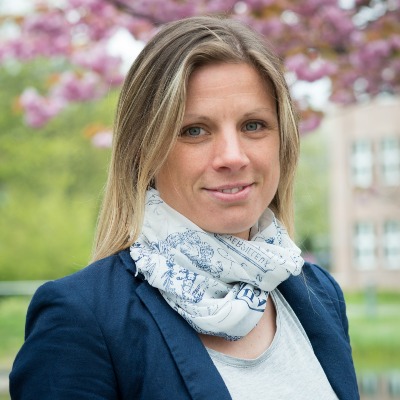
Jana Schor
Microbial Data Science
Contacts

Short summary of your group's research: The new research group Data Science under the supervision of Dr. Jana Schor focuses on Data Science methods, like Machine Learning and Data Integration, to boost the extraction of knowledge from human and environmental health Big Data sets. We apply and develop respective computational methods on public and in-house data sets, mainly in the field of environmental and health research, to generate novel hypotheses, and make predictions on a large scale. To increase the credibility of our AI approaches we introduce explainability and methods for the quantification of uncertainty into our applications. We further attach great importance on the principles of reproducible research.
What infrastructure, programs and tools are used in your group? High performance computing infrastructure at the UFZ and storage as well as data integration capabilities of the European Open Science Cloud; Software is developed in R, and Python, and is provided in Singularity containers and/or in public gitlab repositories at the HZDR; for training our deep learning models or other computationally expensive calculations we use the GPUs that are integrated into our servers and the HPC system.
What could a participant of the HIDA Trainee Network learn in your group? How could he or she support you in your group? A participant of the HIDA Trainee Network will learn to organize his/her data analysis or software development projects according to clear data management plans and with SOPs that allow shared and joint code development, respective documentation, and the reproducibility of research results. We offer to share our expertise in the application of machine learning approaches and respective data pre-processing strategies. Further, we are experienced in story telling with data and offer to teach respective principles to the participants. We welcome participants with a background in machine learning who are interested in the applications of their methods to our research questions, e.g. in the field of predictive toxicology. We also invite researchers with a chemistry, (eco-)toxicological or biological background who might inspire us with interesting research questions and who are willing to learn helpful data science strategies.
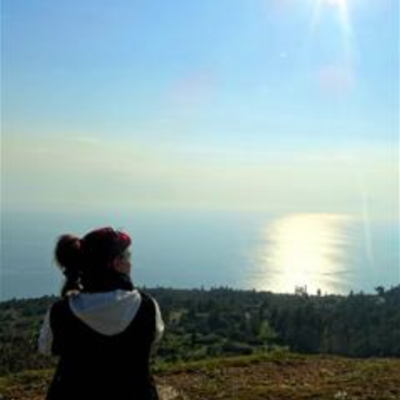
Elina Takola
Computational Landscape Ecology
Contacts

Three-sentence summary of your group's research: My research interests are in the field of landscape ecology, with a focus on animal ecology, biodiversity monitoring, data syntheses and meta-analyses.
I am a supporter of open science and FAIR principles. I mostly R and sometimes Python to analyze published studies and big datasets.
What could a guest researcher learn in your group? How could he or she support you in your group? Guests can participate in data synthesis projects and meta-analyses. We summarize large amounts of literature in a comprehensive way, in order to provide a complete picture of evidence to scientists, stakeholders and decision-makers.
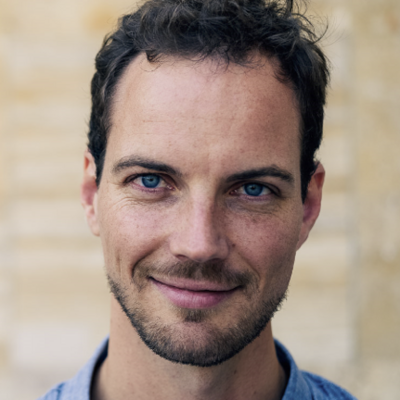
Jakob Zscheischler
Computational Hydrosystems
Contacts

Three-sentence summary of your group's research: We work on better understanding and modelling compound weather and climate events and their impacts. We use statistical and machine learning approaches to analysis climate and impact data to better understand compounding climate drivers of impacts, We further analysie climate model projections to estimate future climate risk.
What infrastructure, programs and tools are used in your group? We analyse large amounts of data, learn new statistical and machine learning approaches to estimate climate risks.
Helmholtz Centre for Ocean Research GEOMAR
GEOMAR Helmholtz Centre for Ocean Research Kiel is one of the world’s leading institutions in marine science. Its research focuses on chemical, physical, biological, and geological processes in the ocean and their interactions with the seafloor and the atmosphere.
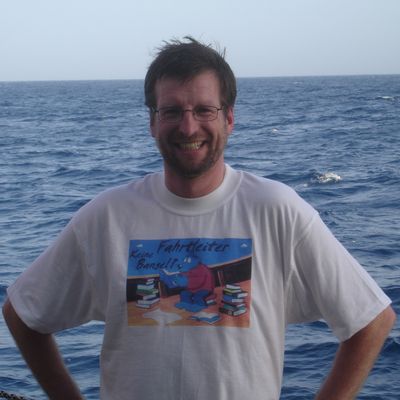
Hermann Bange
Trace Gas Biogeochemistry
Contacts

Short summary of your group's research: My working group is working on the biogeochemical pathways and emissions of climate -relevant trace gases such as N2O, CH4, CO, DMS and NO. Moreover, we run the Boknis Eck Time-Series Station (Eckernförde Bay, SW Baltic Sea) and the MEMENTO (the MarinE MethanE and Nitrous Oxide) database. We are operating worldwide.
What infrastructure, programs and tools are used in your group? - Boknis Eck Time-Series Station (www.bokniseck.de); Boknis Eck underwater observatory
- MEMENTO database (ttps://memento.geomar.de)
- Various research vessels
- Lab based measuerments
What could a participant of the HIDA Trainee Network learn in your group? How could he or she support you in your group? We offer:
- Work with time series data and databases (Boknis Eck, MEMENTO)
To want:
- Someone who to develop and realise new concepts for visualisation/integration/analysis of data sets.
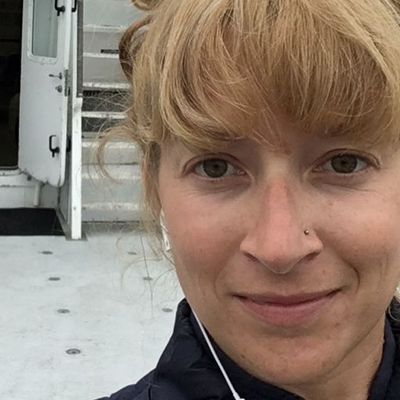
Kristin Bergauer
Microbial Oceanography & Biogeochemistry
Contacts

Three-sentence summary of your group's research: Our laboratory conducts research on single-celled organisms known as bacteria and archaea that have a crucial role in the cycling of (micro)nutrients in both the photic and aphotic regions of the global oceans. Our research in the field of biological oceanography encompasses the integration of marine microbial ecology and biogeochemistry, operating under the overarching framework of physical oceanography. At GEOMAR, our research focuses on investigating microbial B vitamins, ectoenzymes, and the functional capabilities of microorganisms. We employ integrated multi-omics approaches, together with laboratory studies conducted at the Boknis Eck Time-Series Station in the Southwest Baltic Sea and during oceanographic cruises.
What infrastructure, programs and tools are used in your group? State-of-the-art molecular tools are employed in our lab facilities to conduct experiments involving these organisms. These tools include e-DNA analysis, molecular laboratory techniques, flow cytometry, microscopy, and the use of genetically modified organisms (GMOs). Metagenomic, -transcriptomic, and -proteomic analyses generate a vast amount of data, which can be effectively analyzed by leveraging the high-performance computing cluster available at Kiel University. The analysis of Underwater Vision Profiler (UVP) images is presently conducted using the Quantitative Imagery Platform of Villefranche.
What could a guest researcher learn in your group? How could he or she support you in your group? The visiting scientist will have the opportunity to actively participate in ongoing research and gain knowledge regarding the bioinformatic analysis of multi-omic and e-DNA datasets. In summary, this encompasses the implementation of essential software, the development of procedural frameworks, computational methodologies for data-driven microbiology, and the utilization of visualization techniques.
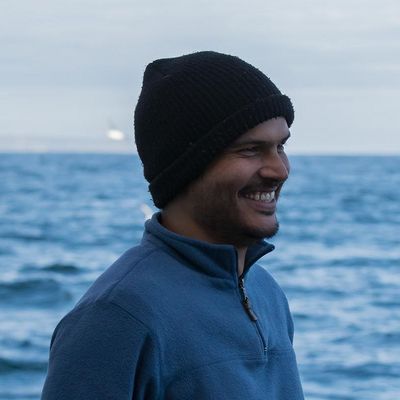
Amir Haroon
Marine Geodynamics
Contacts

Short summary of your group's research: We apply numerous geophysical methods to understand sub-seafloor processes for tectonic, environmental and resource questions. Our expertise involves not only the evaluation of the individual methods / datasets, but has recently evolved into the application of state-of-the-art machine learning workflows to integrate disparate geophysical and geological data on various spatial scales.
What infrastructure, programs and tools are used in your group?
HPC Computing Centres at CAU Kiel
Open-source programms for interpreting Electromagnetic data
Python tools for ML
What could a participant of the HIDA Trainee Network learn in your group? How could he or she support you in your group? We are seeking for guest researchers with various geophysical data (e.g. CSEM, Seismics and Borehole Data) seeking to develop new concepts on integrating these into a consistent subsurface model.
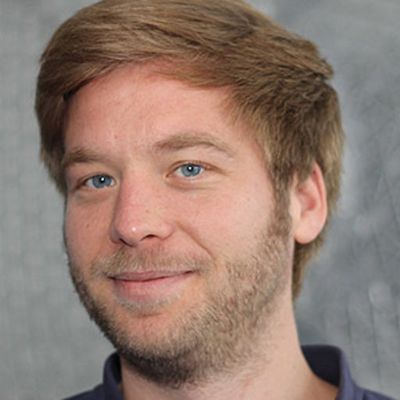
David Nakath
Marine Geosystems
Contacts

Short summary of your group's research: The Oceanic Machine Vision Group at the GEOMAR works on the topic of optical underwater surveys employing artificial intelligence (AI) and classical computer vision approaches. To this end, we seek to enable cameras to serve as faithful measurement instruments and navigation sensors in the deep sea. The latter, visually challenging environment, presents us with a lot of geometric (refraction) and radiometric problems (attenuation, scattering) which we seek to solve.
What infrastructure, programs and tools are used in your group? We normally devise novel approaches writing Python / C++ Code on Linux machines storing it on GIT, potentially in some remote (over ssh) work. If desired, access to GPUs can be provided in addition.
The subsequent evaluation is often conducted on synthetic as well as real data. To this end, we maintain multiple sets of underwater imagery, specifically tailored to the problems we work on. We also have camera-light systems, which can be operated manually, inside a test tank or directly in the Baltic Sea. In addition, they can be attached to AUVs and the like, to capture actual deep sea datasets. Hence, new data can be taken, if necessary.
What could a participant of the HIDA Trainee Network learn in your group? How could he or she support you in your group? The guest can learn about synthesizing visual data or taking real data in controlled conditions in a test tank, or at the actual sea. Furthermore, we can provide deep insights about geometric and radiometric problems typically encountered in underwater scenarios. We have a wide range of topics inter alia covering refraction, color correction, medium estimation, light pose optimization, structure from motion, state estimation and image segmentation/classification. We will approach those problems with the means of classical computer vision but also with neural networks in conjunction with differentiable physical models. Finally, we would be happy if the guest researcher would co-author a research paper and/or contribute to our software.
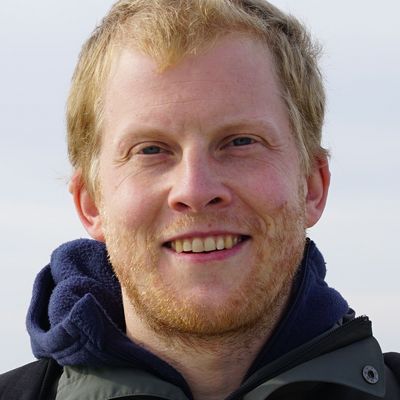
Timm Schoening
Data Science Unit
Contacts

Three-sentence summary of your group's research: The Data Science Unit (DSU) of GEOMAR develops Data Science methods for marine research and applies them together with the researchers to the heterogeneous data of GEOMAR and its partner institutes. The DSU offers support and training on Data Science methods to researchers at GEOMAR. We aim to adress the grand challenges of marine science with data science methods.
What infrastructure, programs and tools are used in your group? We work with all data types relevant to the marine sciences: time series (e.g. in climate research, ecology), grids (e.g. in seafloor mapping, microscopy imagery), cubes (e.g. in ocean current simulation, 4D visualization). Our data products are developed and operated interactively (e.g. Jupyter notebooks) and most of the magic happens in Python. High-performance computing can be conducted on HGF computing ressources, at our compute cluster at Kiel University or on mobile GPU clusters for HPC computing at sea.
What could a guest researcher learn in your group? How could he or she support you in your group? Working with marine science data sets. Detecting and classifiying events in heterogeneous data (time series, grids, data cubes, ...). AI and ML methods. Supervised / unsupervised clustering of data. Integration of AI, simulation, and observation methods and data into Digital Twin frameworks. Working towards solutions for pressing ocean and society challenges.
Alfred-Wegener-Institut - AWI
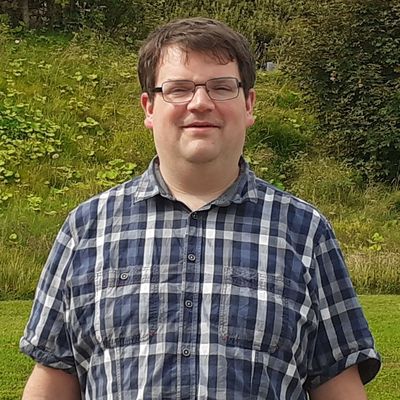
Sebastian Primpke
Microplastics
Contacts

Short summary of your group's research: In the working group we work on analytical techniques for the determination of micro- and nanoplastics using chemometric approaches. Data analysis is mainly performed on hyperspectral FTIR and Raman images which are targeted by various chemometric approaches. In general, these approaches are linked to the environment by research cruises, projects and meta analyses.
What infrastructure, programs and tools are used in your group? We have several spectroscopic imaging instruments (FTIR / Raman) available, a selection of dedicated computers designed for data analysis. We are currently using Python and CUDA for data analysis.
What could a participant of the HIDA Trainee Network learn in your group? How could he or she support you in your group? Our group can provide a large material database, instruments and calculation power for the development of chemometric approaches. We can support the guest researcher in the development of their chemometric based analysis ideas and look forward to link these with our existing or planned approaches in form of for example future research proposals with the guest researcher.
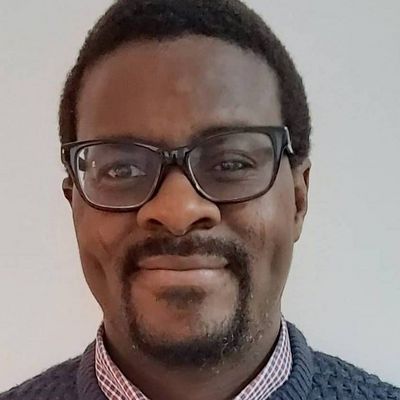
Olanrewaju Sulaiman Oladokun
Shelf Sea Ecologogy / Marine Aquaculture
Contacts

Short summary of your group's research: Marine Multiuse system involving mapping of aquaculture site within German Northsea, Development of digital reliability and ecological system from available data for safe deployment and operation of marine system, GUI and Gitlab Modeling of Aquaculture system operation.
What infrastructure, programs and tools are used in your group? Sea site simulation software species
What could a participant of the HIDA Trainee Network learn in your group? How could he or she support you in your group? Contribute GIT; GUI; Matlab Python coding
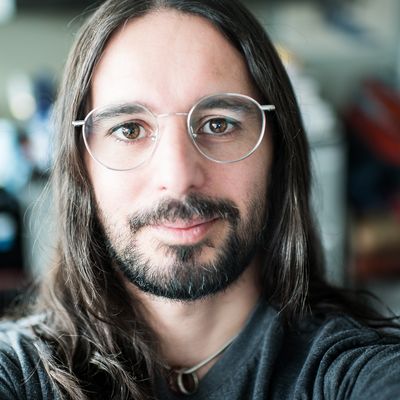
A. Murat Eren
Ecosystem Data Science Group
Contacts

Three-sentence summary of your group's research: Our research program focuses on understanding the ecology and evolution of naturally occurring microbial life using integrated ‘omics strategies and laboratory experiments. Our group aims to develop new computational approaches and create advanced software platforms that intend to generate hypotheses from complex environmental data to bring us closer to explain mechanisms by which microbes interact with their surroundings, evolve, disperse, and initiate or adapt to environmental change. We are environment agnostic as microbial ecology and evolution happens everywhere, thus, our recent work ranges from the human gastrointestinal tract and oral cavity to sewage systems, and insect ovaries. That said, we find marine systems much more intriguing than most other habitats and desire to channel our future efforts to understanding microbial life in sunlit and dark oceans.
What infrastructure, programs and tools are used in your group? Having to work with extremely large and complex 'omics datasets, the initial stages of our data analyses typically rely on high performance computing infrastructures. Although, as we are often much more interested in targeted analyses of subtle phenomena that reveal specific insights for specific questions rather than overall analyses of our data, later stages of our data analyses often rely on R and/or Python programs and interactive visualization solutions.
Our group includes many of the key developers of anvi'o (https://anvio.org/), a comprehensive open-source software platform that brings together many aspects of today’s cutting-edge computational strategies of data-enabled microbiology, including genomics, metagenomics, metatranscriptomics, pangenomics, metapangenomics, phylogenomics, and microbial population genetics in an integrated and easy-to-use fashion through extensive interactive visualization capabilities.
Anvi'o stands on more than 200,000 lines of Python and JavaScript code that follow modern software development paradigms thanks to the voluntary contributions of more than 30 developers from the academia and industry to empower microbiologists for their complex needs through an architecture that enables reproducible science and simple interfaces for data access.
What could a guest researcher learn in your group? How could he or she support you in your group? Our group can help addressing novel questions through complex 'omics datasets and ad hoc software development, support others with insights from integrated 'omics strategies, and collaborate on integrating software solutions into the anvi'o software ecosystem to make them available to the broader community of life scientists.
More hosts within Helmholtz
- KIT, HZB, MDC, DZNE
- DKFZ, Desy, DLR
- GFZ, FZJ (1.Teil)
- FZJ (2.Teil), Hereon, HZDR
- CISPA, Helmholtz Munich


